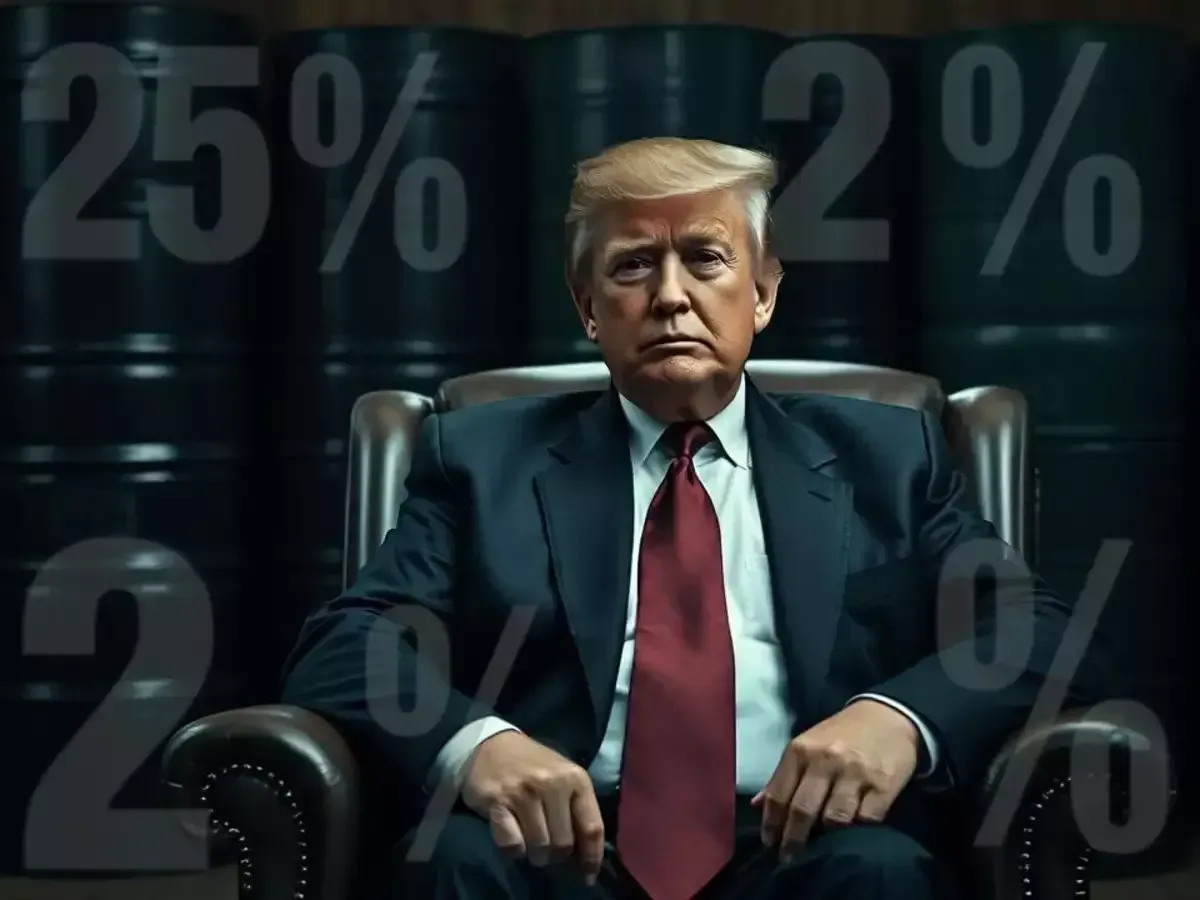Trump’s 25% Tariff on Venezuelan Oil Buyers: Impact on India and Global Markets

Former U.S. President Donald Trump has reignited global trade tensions by announcing a 25% tariff on countries importing Venezuelan oil. This policy, aimed at putting further economic pressure on Nicolás Maduro’s regime, has sent shockwaves across energy markets, with significant implications for India, China, and other major crude importers. The move has also sparked discussions about secondary tariffs, geopolitical shifts, and energy security.
This blog delves into the key aspects of Trump's new tariff policy, how it affects India, and the broader impact on global oil markets.
Understanding Trump’s Tariff Move
Why is Trump Imposing a Tariff on Venezuelan Oil?
The U.S. has long imposed sanctions on Venezuela due to human rights violations, alleged election fraud, and the suppression of democratic opposition. Trump's latest tariff initiative aligns with his administration’s broader goal to cut Venezuela’s primary revenue stream—oil exports—and pressurize Maduro to step down.
The policy also includes:
A 25% tariff on any country buying Venezuelan crude.
An extension of the wind-down period for Chevron’s Venezuela license, affecting U.S.-Venezuela trade.
Potential secondary tariffs on firms circumventing these restrictions.
How Will This Impact India?
India is one of the largest importers of crude oil and has historically sourced oil from Venezuela. However, due to past U.S. sanctions, India significantly reduced its dependence on Venezuelan oil, shifting towards suppliers like Iraq, Saudi Arabia, and the UAE. Still, this new tariff raises several concerns:
1. Increased Oil Import Costs
If Indian refiners continue buying Venezuelan oil, they will have to pay an extra 25% in tariffs, making it more expensive than alternatives.
This could lead to higher fuel prices, impacting inflation and economic growth.
2. Diversion to Other Suppliers
Indian refiners may completely halt Venezuelan oil imports, leading to increased reliance on Middle Eastern and Russian crude.
However, Russia is already under Western sanctions, making it a risky long-term supplier.
3. Diplomatic Strains with the U.S.
India has traditionally maintained a balanced foreign policy but has already faced U.S. pressure for its Russian oil imports.
This new tariff might force India to negotiate with the U.S. or seek alternative arrangements.
4. Impact on ONGC Videsh
ONGC Videsh Ltd. (OVL), India's overseas investment arm, has stakes in Venezuelan oil fields.
With the new tariff, repatriation of dividends from Venezuela may face even longer delays.
Global Implications of the Tariff
The U.S. move is set to shake up global energy markets. Key developments include:
1. China’s Oil Strategy Faces a Blow
China is the largest buyer of Venezuelan crude, using indirect channels to bypass sanctions.
This tariff may slow down China’s oil trade with Venezuela and further strain U.S.-China relations.
2. Oil Prices Rise Amid Uncertainty
Oil prices have already shown an upward trend following the announcement.
With Venezuelan crude supplies disrupted, market volatility is expected, potentially pushing Brent crude prices above $90 per barrel.
3. Strengthening of U.S. Energy Sector
By limiting Venezuelan oil trade, the U.S. indirectly boosts its own shale oil industry.
Major U.S. energy companies like ExxonMobil stand to gain from reduced competition.
4. Potential for Retaliation from Affected Countries
Countries affected by the tariff, like China, India, and Spain, might retaliate with trade barriers on U.S. goods.
This could escalate into a larger trade war, impacting global economic stability.
What’s Next for India?
1. Policy Response
The Indian government may explore:
Negotiations with the U.S. to seek exemptions or reduced tariffs.
Increased domestic oil production and renewable energy initiatives to reduce dependency on imports.
2. Shift Towards Alternative Energy Sources
India may accelerate its investment in solar, wind, and biofuels to cut reliance on volatile crude markets.
3. Strengthening Ties with Other Oil Suppliers
India could expand oil purchases from Middle Eastern allies, Russia, and African nations to compensate for Venezuelan crude.
Conclusion
Trump’s 25% tariff on Venezuelan oil buyers is a major geopolitical and economic development, with direct consequences for India’s energy security and trade strategy. While India has already reduced its dependence on Venezuelan crude, this move adds new challenges to an already complex global energy landscape.
As oil prices fluctuate and diplomatic negotiations unfold, India must strategically navigate this situation—balancing economic stability, energy security, and global partnerships.
Would India continue buying Venezuelan oil despite the tariff? Or will it pivot towards alternative suppliers? The coming weeks will provide critical insights into India’s response to this unfolding trade battle.
Press Release on Our All Websites for Powerful Online Presence
Get your brand featured with a world-class press release, published across all our high-authority websites — complete with powerful do-follow backlinks. Crafted to meet global press release standards, our service ensures maximum credibility, visibility, and SEO impact. Special pricing and exclusive offers are available for a limited time. Contact us today at sunil@justbaazaar.com to elevate your brand’s presence."
Created with ©systeme.io









